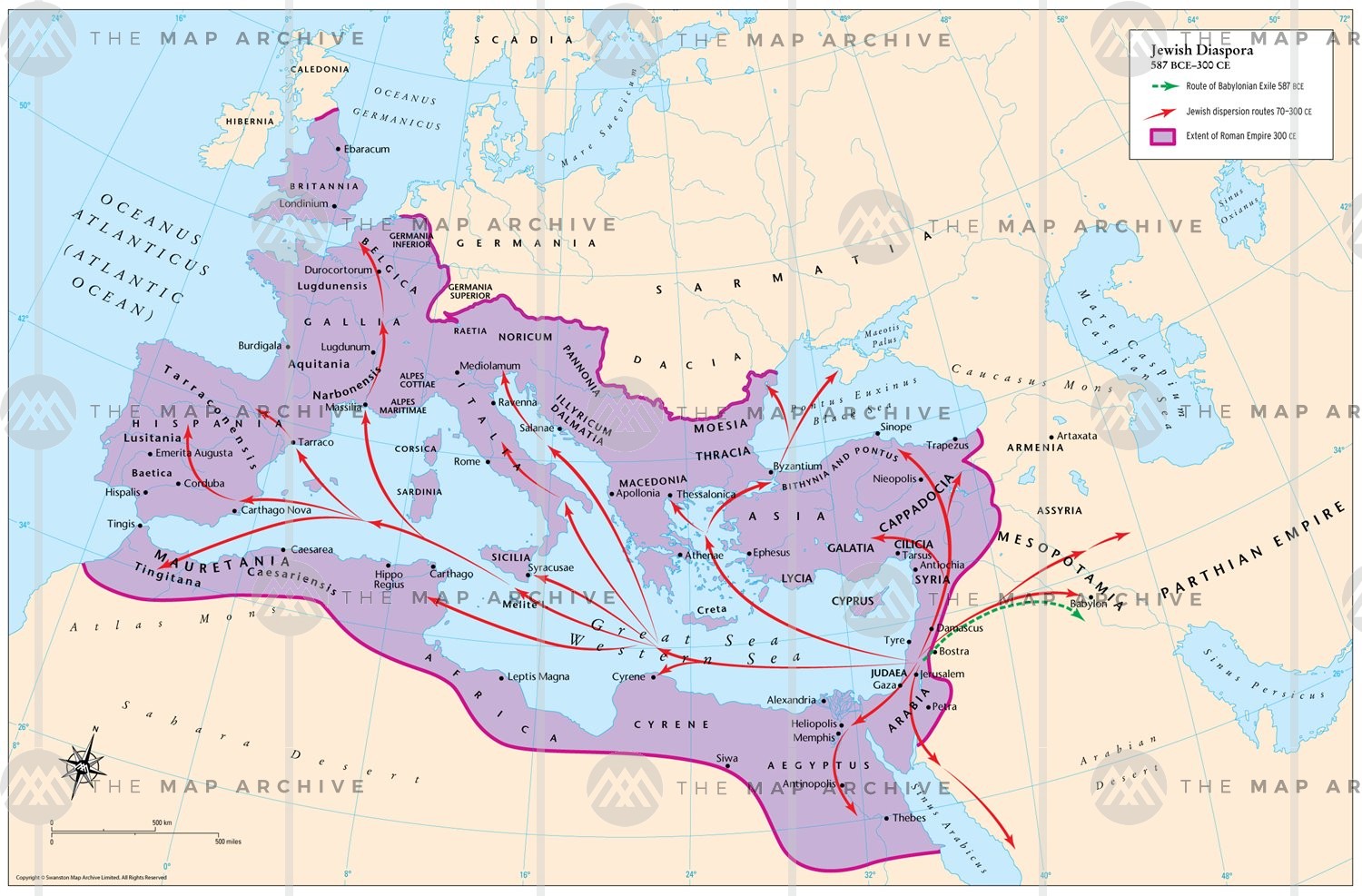The word diaspora according to Thesaurus.com means (mass) exodus, disbandment, dispersal, dispersion, dissolution, escape and refugee flow. Miriam Webster’s Dictionary it can refer to people (Jews), place (where the Jews settled after exile) and the act of movement, migration or scattering of people away from their ancestral homelands. In Hebrew, it is equivalent to the word galut and is always associated with the word exile. Its first known use was when the Hebrew Bible was translated into Greek or the Septuagint, between 740 – 722 BCE.
The history of the Jewish diaspora started with the conquest of Israel by the Assyrians in 733 BCE led by Tiglath-Pileser III of Assyria. Assyrians took advantage of Israel’s weak army. In 725 BCE, Shalmaneser V continued conquering the Kingdom of Israel (Samaria), and after 3 years the conquest was completed by Sargon II, forcing the people of Samaria to leave their homeland. Most of the dispersed people settled in Mesopotamia and others scattered in the nearby lands—this led to the “lost of the ten tribes”. On the other hand, the southern Kingdom of Judeah remained untouched by the conquerors this time because their king agreed to pay silver and gold to the conquering Assyrians.
Gradually, Assyrians settled in Israel where a fusion of cultures and some practices developed. Both groups did not reject each other’s practices and beliefs. The Assyrians did not deny the Hebrews’ practices; some of them even adopted Judaism later on, but with a few modifications. And, although the presence of Assyrians was not welcomed by the Hebrews, they also respected the cultures and beliefs of the Assyrians.
612 BCE marks the fall of the Assyrian conquest in Israel—the Babylonian captivity. They were besieged by the Babylonians led by King Nebuchadnezzar. In 586 BCE the Babylonians fully conquered Israel. The Hebrews resisted the laws of King Nebuchadnezzar—they revolted, refused to pay tribute; hence, people from some parts of the Kingdom of Judeah were deported to Babylon by King Nebuchadnezzar in 597 BCE and, again, in 586 BCE. The resistance of the people resulted in the destruction of the temple. Those who were exiled to Babylon were forced to stay there for 48 years. This time, the Hebrews started to be called Jews.
Even though the Jews were dispersed to different locations, they continued worshipping and following their religious and cultural practices. The prophets were there to interpret God’s words and messages and continued inspiring people to live by the word of God.
The Jews gained hope when Cyrus the Great, King of Persia, Conquered Babylonia in 539 BCE. King Cyrus the Great was a more tolerant leader. This became a period of restoration because he allowed the exiled Jews to return to their homeland. He gave them the freedom to exercise their religious belief and political ideals. The destroyed temple was also rebuilt, a symbol of a renewed religious life for the Jews. However, not all Jews who were banished to Babylon came back to their homeland; some people chose to stay in Babylon even after the period of restoration because traveling might be too dangerous for them.
